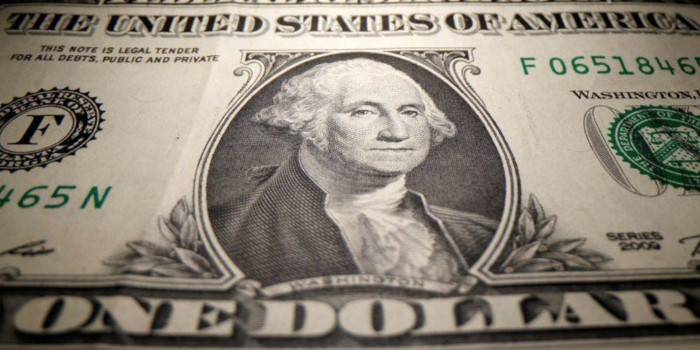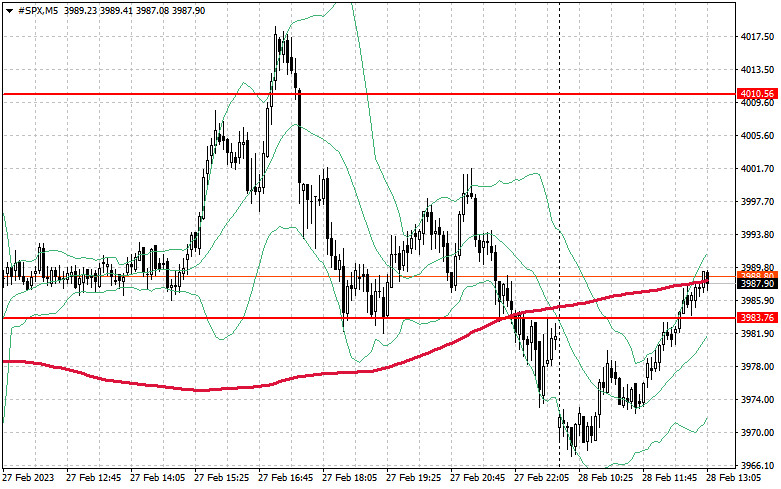
The market is calm. Yesterday's surge in the middle of the regular session ended with a big sell-off. Today, European stock index futures fell, while US futures rose. Eurozone bond yields rose on news that inflation is likely to rise further, increasing the chances of a further rate hike. The Stoxx 600 index fell by 0.3%, down 1.7% in February after reports on higher inflation in France and Spain. Futures on the S&P 500 added 0.3% and the Nasdaq 100 jumped by 0.4%. Overall, trading remains within the channel. Let's focus on this in more detail.

Meanwhile, German 2-year government bond yields jumped by 9 basis points to 3.17%, the highest level since 2008. US Treasury yields rose, with the 10-year rising by 4 basis points to 4%.
The recent data is likely to strengthen central banks' decision to keep raising rates in order to cool down red-hot inflation. Clearly, more needs to be done to severely harm the resilient US economy, which still remains intact despite the Federal Reserve's aggressive interest rate hikes.
Yesterday, US data outlined a difficult task for the Federal Reserve, which is still hoping for a smoother landing of the economy but apparently won't get it done. According to the report, pending home sales rose in January to the highest level since June 2020. Durable goods orders fell, but with the drop in vehicles, they rose more than expected. Orders for business equipment placed in factories also rose. All of this suggests that the Fed will have to keep raising rates, which could peak this year at around 5.4%, versus the 5% expected just a month ago. Federal Reserve Governor Philip Jefferson, in an interview, supported the central bank's 2% inflation target, saying that further policy tightening should be pursued.
Reportedly, inflation in France accelerated to record levels in February this year, while in Spain prices also rose unexpectedly in February due to higher electricity and food prices. This increased pressure on the ECB, forcing it to raise interest rates.
Already, money markets are expecting the ECB rate to be at 4% by February 2024, up 0.5% from what was expected earlier this year. This would surpass the peak in rates seen more than two decades ago.
Meanwhile, oil fell for the fourth consecutive month as concerns over monetary tightening and rising US inventories overshadowed optimism over rising demand in China. Gold may see its worst month since mid-2021.

As for the S&P 500 index, the pressure on risky assets has eased a bit but it has not changed the overall bearish trend. The index may recover only if bulls manage to get back above $4,010 today. After that, they may push the price to $4,038. Bulls need to control the level of $4,064. In this case, the bear market will be canceled. Only after that, we can expect a more confident surge to $4,091. If the index declines amid strong data on the US consumer confidence indicator, as well as the lack of demand, bulls will have to protect $3,983. If this level is broken, the trading instrument may be pushed down to $3,960 and $3,923.